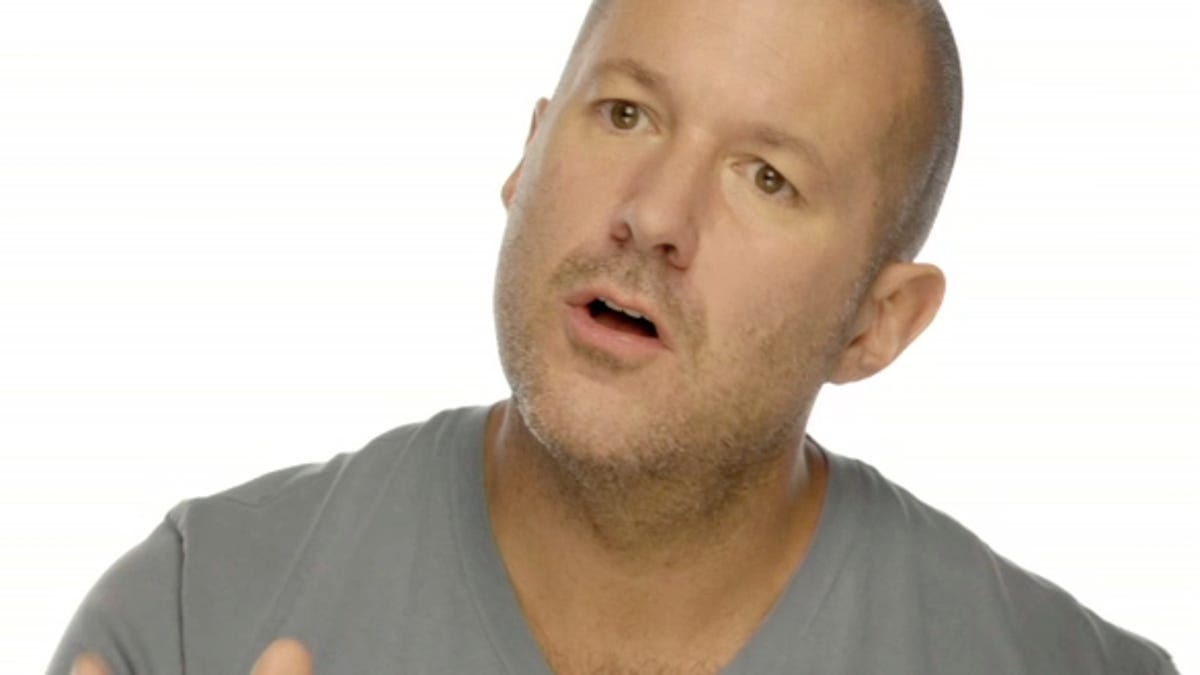Jony Ive's challenge: Redesigning the human-computer interface for the masses
With his new responsibilities, the famed designer of Apple's iconic hardware is now tasked with making complexity disappear from the company's smartphone, tablet, and desktop software.

It shouldn't be a surprise to learn that Apple suffers from political infighting, fiefdoms, and dysfunctional relationships. What company doesn't, especially a large company full of big egos, with money to burn? And so we learned from various reports this week that CEO Tim Cook made a calculated decision to remove divisive software head Scott Forstall and hand over some of his responsibilities to hardware design guru Jony Ive.
It also shouldn't be a surprise that Ive's power base is expanding. He already had the most powerful voice among Apple executives, if you believe what Steve Jobs had to say about him (as quoted in Walter Isaacson's biography of Apple's co-founder).
The difference that Jony has made, not only at Apple but in the world, is huge. He is a wickedly intelligent person in all ways. He understands business concepts, marketing concepts. He picks stuff up just like that, click. He understands what we do at our core better than anyone. If I had a spiritual partner at Apple, it's Jony. Jony and I think up most of the products together and then pull others in and say, 'Hey, what do you think about this?' He gets the big picture as well as the most infinitesimal details about each product. He's not just a designer. That's why he works directly for me. He has more operational power than anyone else at Apple except me. There's no one who can tell him what to do, or to butt out. That's the way I set it up."
It's apparent that Cook and Apple's board of directors have a similar view of Ive's importance to the company. And, he is not without political skills, as proved by his steady ascent through the ranks under the mercurial Jobs. He has also shown aptitude for painting Apple's latest technology with the expected rhetorical flourishes. In describing the iPad Mini, Ive said, "There is inherent loss in just reducing a product in size.... We took the time to design a product that was a concentration of, not a reduction of, the original." In other words, a smaller iPad with inferior screen resolution and a slower processor isn't an example of reduction.
Whether Ive can master the launch cadence and complexities of software design remains to be seen.
In a May 2012 interview with the Telegraph, Ive said, "We're keenly aware that when we develop and make something and bring it to market that it really does speak to a set of values. And what preoccupies us is that sense of care, and what our products will not speak to is a schedule, what our products will not speak to is trying to respond to some corporate or competitive agenda. We're very genuinely designing the best products that we can for people."
Historically, Apple has been effective with its product delivery cadence for software and hardware. But there's no guarantee that the past will be prologue as the market becomes even more competitive. Google, Amazon, Samsung, Microsoft, and others are aggressively pursuing Apple's smartphone and tablet businesses, and that suggests Ive may be forced to accelerate the speed of his team.
He will clearly have far more influence on the look and feel of the user interface (UI), and bring his collaborative, team approach to the software organization. As Ive told the Telegraph, "We have become rather addicted to learning as a group of people and trying to solve very difficult problems as a team." He added, "We iterate every day and never have dumb-ass presentations."
Apple's user interfaces for its desktop (OS X) and mobile (iOS) products have steadily improved over the years, though they're still deeply rooted in the icons, windows, and folders developed at Xerox PARC more than three decades ago. But as the devices add more capabilities, it's also harder to achieve the simplicity that's at the center of Ive's design philosophy.
An Apple designer told The New York Times, "You can be sure that the next generation of iOS and OS X will have Jony's industrial design aesthetic all over them. Clean edges, flat surfaces will likely replace the textures that are all over the place right now."
Those kinds of changes apply to the fit and finish of Apple's user experience. It's the software equivalent of Ive's hardware design magic, such as making the iPhone thinner and lighter or the friction stir welding that merges molecules of aluminum together to make the new, incredibly thin iMac enclosure.
The bigger task for Ive will be to invent more magical software that will keep Apple at the forefront of the race to evolve the human-computer interface for the masses. Microsoft just rebooted its UI with its touch-centric Windows 8, breaking dramatically with the company's past. Win 8 may take a few years to fully catch on, but the software landscape is certainly changing.
In describing his design philosophy in the context of Apple's hardware products, Ive told the Telegraph that the aim was "to bring a calm and simplicity to what are incredibly complex problems, so that you're not aware really of the solution, you're not aware of how hard the problem was that was eventually solved."
Now he is tasked with making complexity disappear from Apple's smartphone, tablet, and desktop software. If he can solve that problem, it would be the crowning achievement of an already illustrious career. But as Ive doubtless knows, this may be the challenge of a lifetime.

